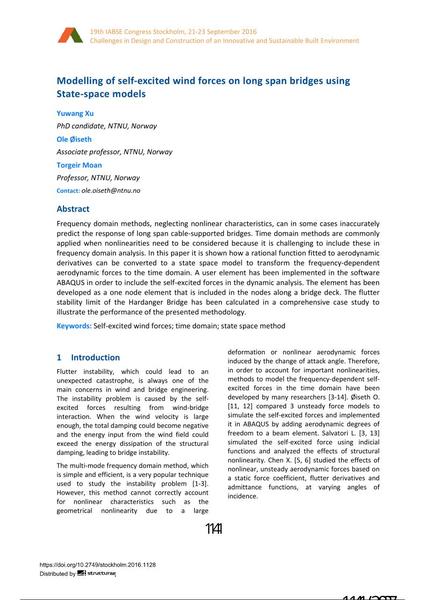Modelling of self-excited wind forces on long span bridges using State-space models

|
|
|||||||||||
Détails bibliographiques
| Auteur(s): |
Yuwang Xu
(PhD candidate, NTNU, Norway)
Ole Øiseth (Associate professor, NTNU, Norway) Torgeir Moan (Professor, NTNU, Norway) |
||||
|---|---|---|---|---|---|
| Médium: | papier de conférence | ||||
| Langue(s): | anglais | ||||
| Conférence: | IABSE Congress: Challenges in Design and Construction of an Innovative and Sustainable Built Environment, Stockholm, Sweden, 21-23 September 2016 | ||||
| Publié dans: | IABSE Congress Stockholm, 2016 | ||||
|
|||||
| Page(s): | 1141-1148 | ||||
| Nombre total de pages (du PDF): | 8 | ||||
| Année: | 2016 | ||||
| DOI: | 10.2749/stockholm.2016.1128 | ||||
| Abstrait: |
Frequency domain methods, neglecting nonlinear characteristics, can in some cases inaccurately predict the response of long span cable-supported bridges. Time domain methods are commonly applied when nonlinearities need to be considered because it is challenging to include these in frequency domain analysis. In this paper it is shown how a rational function fitted to aerodynamic derivatives can be converted to a state space model to transform the frequency-dependent aerodynamic forces to the time domain. A user element has been implemented in the software ABAQUS in order to include the self-excited forces in the dynamic analysis. The element has been developed as a one node element that is included in the nodes along a bridge deck. The flutter stability limit of the Hardanger Bridge has been calculated in a comprehensive case study to illustrate the performance of the presented methodology. |
||||
